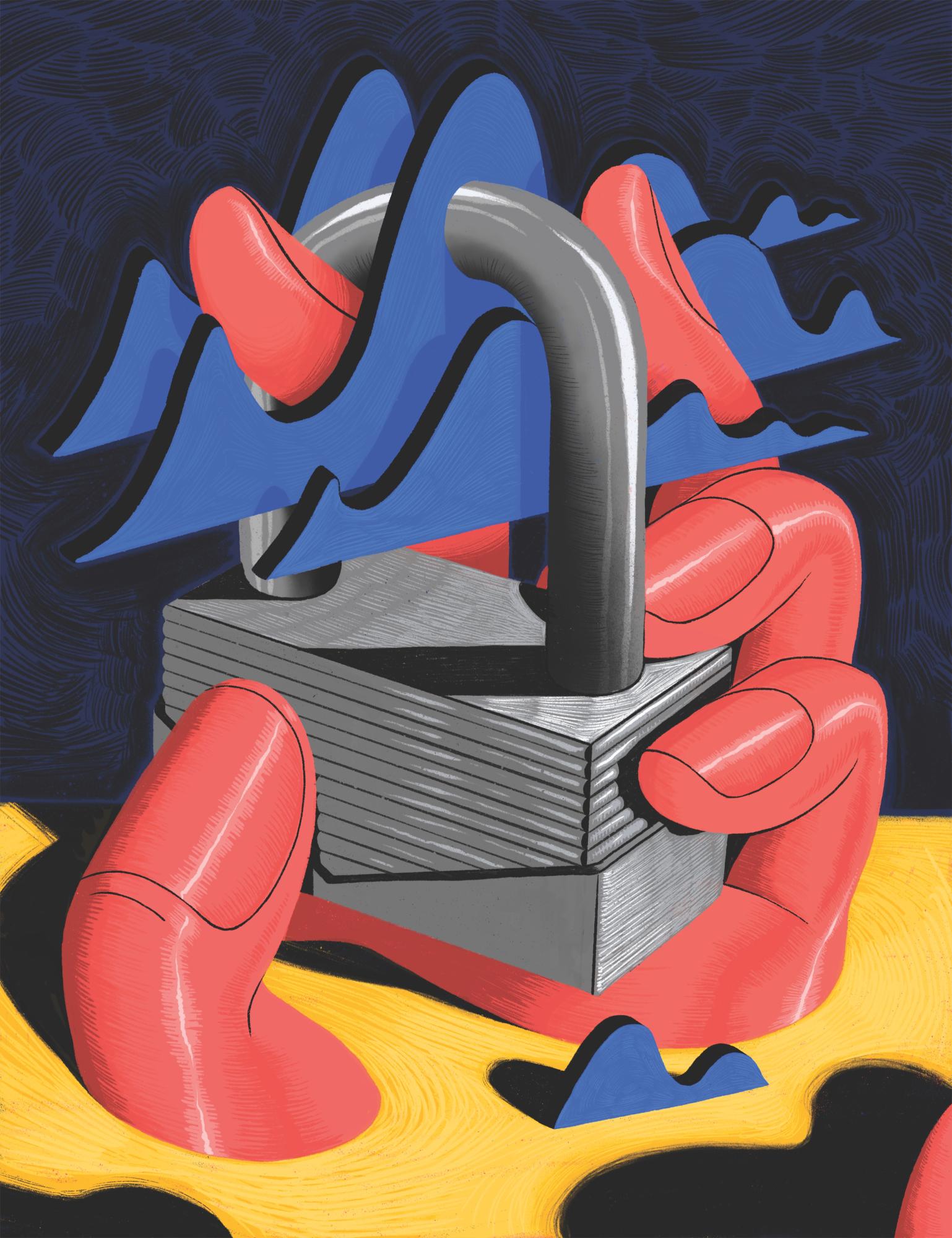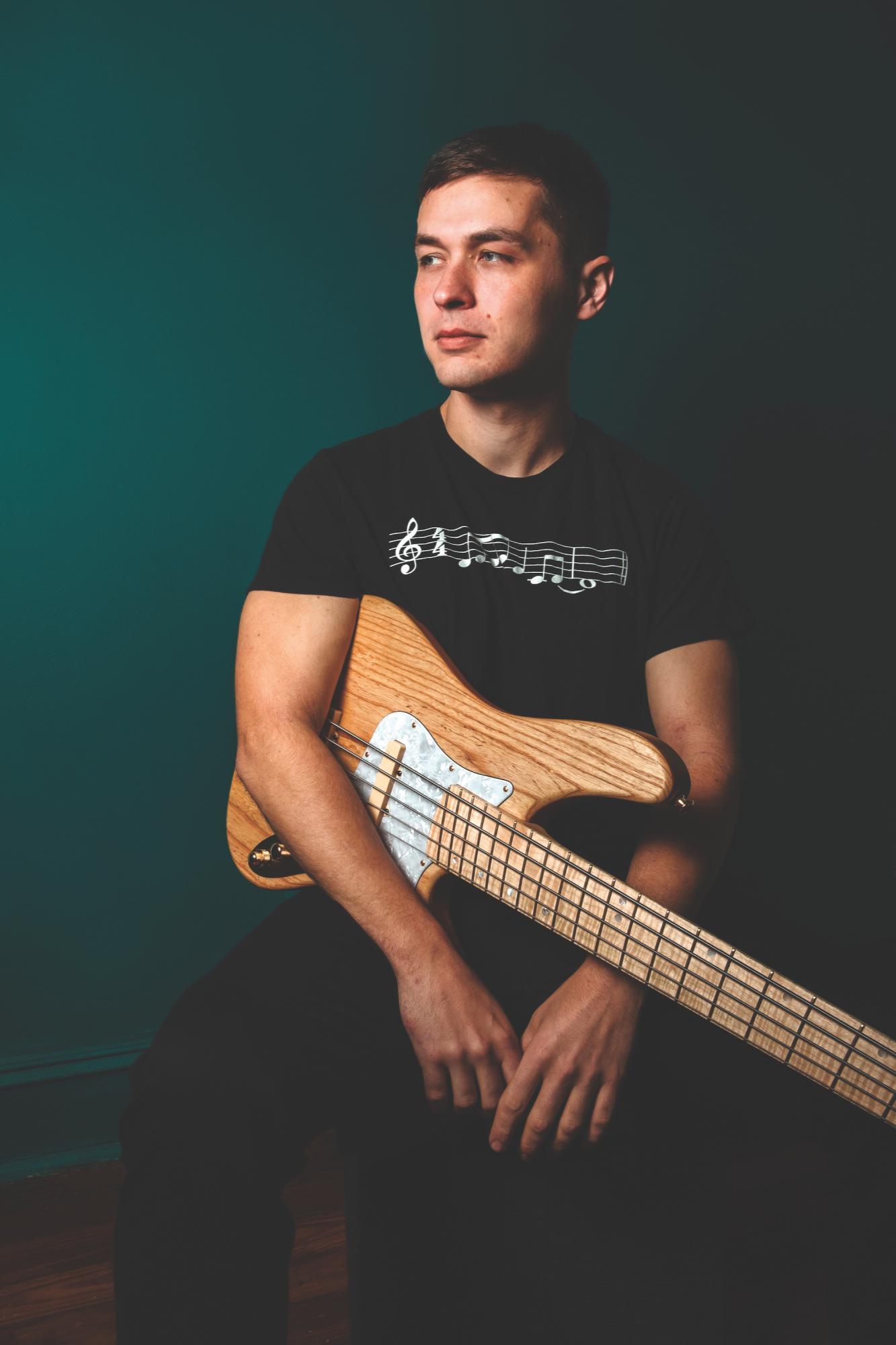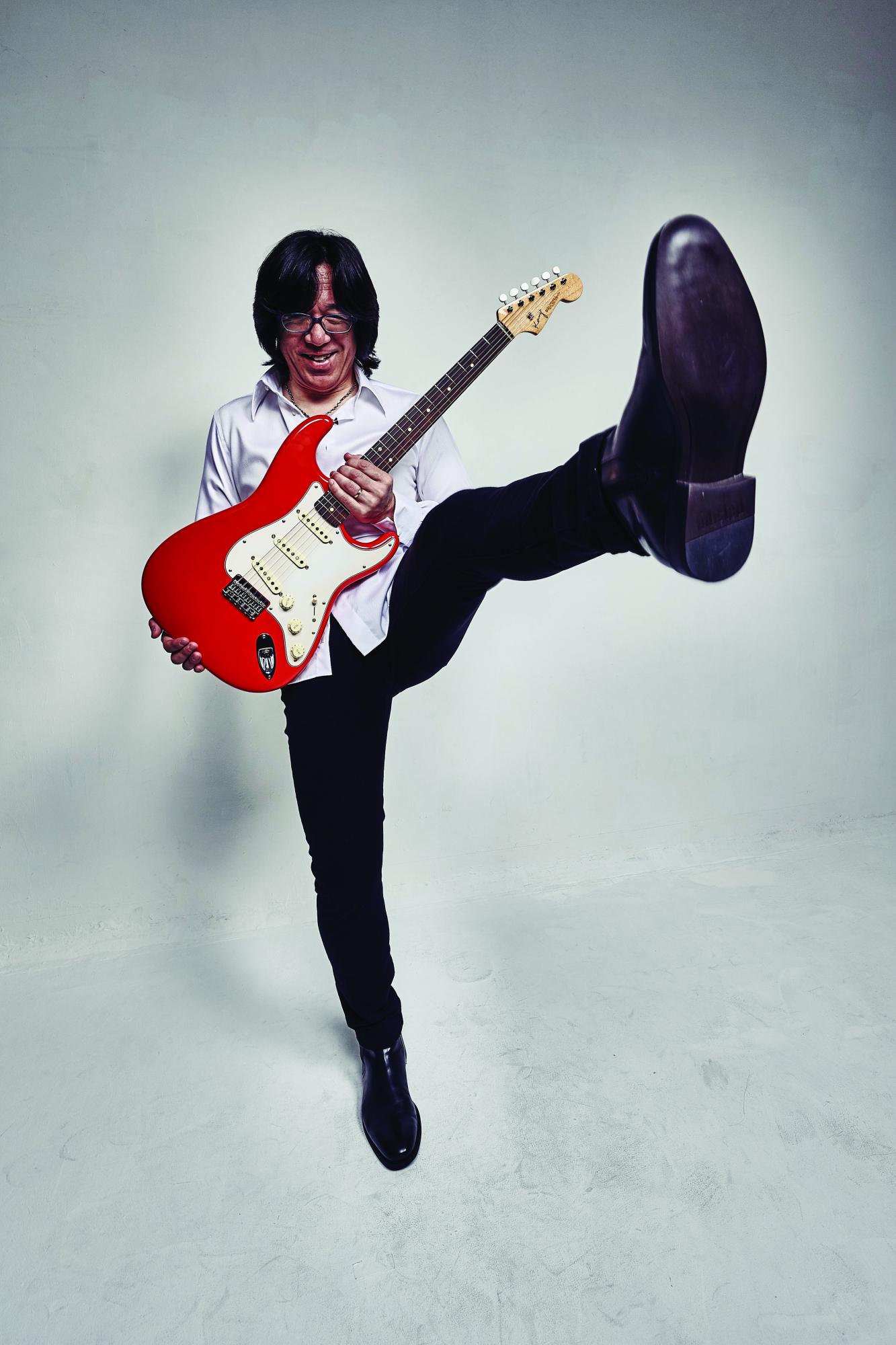Fair Play: Asserting Fair Use in the Age of Content ID

Illustration by Bruce Wymer
Over the past decade, many music educators have embraced YouTube as a platform to share educational content, reach a broader range of students, and, hopefully, supplement their income with a bit of ad revenue. The platform is hugely popular with music students of all skill levels, providing everything from beginner guitar lessons to in-depth analysis of iconic jazz solos. More than any other social media, YouTube connects independent learners with teachers who can help them.
While this may sound like a match made in heaven, the platform’s copyright management policies create roadblocks for educators who post instructional videos on the site. YouTube uses a digital fingerprinting system known as Content ID to automatically scan every video uploaded to the platform, searching for copyright-protected material. Excerpts of songs as brief as five seconds can result in a video being flagged or taken down for copyright infringement, even though the video may be perfectly legal under the fair use doctrine, which allows educators to use copyrighted songs as examples of the concepts they are teaching.

Adam Neely
Image by Liz Maney
But what is legally considered fair use isn’t always straightforward. What may be fine for a closed educational system like a college or middle school becomes much murkier in the wide-open—and revenue-generating—world of YouTube. Let’s say, for example, you are teaching a lesson on how to reharmonize a jazz standard. In all likelihood, your lesson would include excerpts of recorded music, illustrating various harmonic approaches used by artists over the years. In the classroom environment, this undoubtedly would be considered fair use.
But if you were to record this lesson and upload it to YouTube—sharing your lesson with the platform’s 2.6 billion users—your right to fair use isn’t so clear cut. Because Content ID is fully automated, the system cannot distinguish fair use exceptions from outright piracy—which means that educational content gets ensnared just as easily as bootlegged copies of Beyoncé’s latest single. And, once a video has been flagged, the copyright holder can opt to have the video removed, thereby deleting the educator’s lesson.
Adam Neely B.M. ’09 has experienced this problem firsthand. As one of the most popular and beloved music educators on YouTube, with 1.69 million subscribers, Neely says that nearly all the content on his channel(Opens in a new window) has been flagged for copyright infringement.
“I think—and many of the other people on YouTube also think—that this is an issue of fair use,” he says. “We legally have the right to use these small snippets for purposes of commentary and analysis.”
Neely creates video essays and lessons that use brief clips of recorded music (each less than 10 seconds long) interwoven with his thoughts on everything from music theory and history to psychology and pop culture. The resulting videos feel like a lecture delivered by your favorite college professor crossed with a clever talk show host; and they’re “highly polished, cleverly edited, and consistently funny,” says Spin magazine.
“If I’m trying to make some kind of broader cultural or music theory or historical reference, I need to be able to use that bit of the copyrighted work; otherwise my commentary is meaningless,” Neely says. “There is no other way of doing it in the medium of YouTube.”
Associate Professor Tomo Fujita(Opens in a new window), who launched his YouTube channel(Opens in a new window) in 2019, strongly agrees, adding that YouTube has become an essential tool for connecting with students online. “It’s the only way. On Facebook, Instagram, Twitter, people say amazing stuff, but that’s all. They just talk, talk, talk,” he says. “Those [platforms] are just making buzz. It doesn’t do anything about anything unless you have a YouTube.”
Fujita’s approach to videos feels more personal—something akin to a private lesson in his home, during which he shares not only guitar instruction, but also life stories, jokes, and footage of his cat, Dexter. Fujita has built a following of 505,000 subscribers. But, he says, he cannot count on YouTube ad revenue for income, because of copyright issues. “I don’t really expect [it to make money],” he says. “But if it does, great.”
That’s because whenever Content ID finds a copyright-protected song in a video, YouTube allows the copyright holder to appropriate any ad revenue generated by the video. This practice, known as monetization, means that large corporations like Universal Music Group, Sony Music Entertainment, and Warner Chappell Music can take revenue away from educators like Fujita and Neely simply because they used a snippet of a song in one of their videos.
“If I’m trying to make some kind of broader cultural or music theory or historical reference, I need to be able to use that bit of the copyrighted work; otherwise my commentary is meaningless."
—
Monetization began as an attempt to protect intellectual property, but has turned into a cash-generating machine for rights holders. According to YouTube’s most recent Copyright Transparency Report, “…because of Content ID, YouTube has created an entirely new revenue stream from ad-supported, user-generated content—paying more than $7.5 billion to rights holders from ads alone as of December 2021.” And while Content ID has helped ensure that artists rightfully get paid for their creations, it also ensnares content creators who are acting above-board.
The volume of Content ID claims is staggering. According to the transparency report, copyright holders made approximately 759 million claims in the second half of 2021 alone. Combined with data from the first half of 2021, nearly 1.5 billion Content ID claims were made in one year.
If an uploader believes his use of a recording is protected under the fair use doctrine, he can dispute the claim, following specific guidelines laid out by YouTube. But ultimately, the copyright holders themselves get final say in the dispute phase. In other words, the owners of the material are effectively deciding the legality of its fair use.
The lengthy process of fighting Content ID claims has become a regular part of Neely’s life as a YouTuber. In most cases, he says, the rights holders ultimately drop the claim, and the ad revenue finds its way back to Neely.
“The amount of money in ad revenue that they might claim for one of my videos might be $1,000, $1,500—which is very significant for me, but in the grand scheme of things for their legal department, it’s like, ‘Nah, that’s not worth it,’” he says.

Tomo Fujita
Image by Takao Ogata
Fujita says he never disputes copyright claims. The process takes too long, he says, so he chooses to forfeit the ad revenue. His long-term strategy is to attract new students via YouTube content, then encourage them to subscribe to his personal website, Guitar Wisdom(Opens in a new window).
“I do not argue. Whatever happens, I move on,” Fujita says. But he understands why Neely disputes claims: “He spends so many hours on one video. He has to fight. I focus on making a better video for my Guitar Wisdom.”
Neely has resigned himself to the Content ID dispute process, for all its hassles and delays in ad revenue payments. And he has turned to Patreon as a consistent source of income. But there is more than income at stake when it comes to fair use, he says.
“It’s very important to make music a lived tradition—to make it something that people are talking about…. YouTube and social media is a very important part of that shared culture,” he says. “Digital rights management actively works against that in a way that is hard to quantify but is very serious.”
A Gray Area
Neely points out that YouTube’s copyright policies exist in “a legal gray area” and have never been tested in court. While this ambiguity makes life challenging for YouTubers, copyright law is inherently complicated in that it must balance the rights of authors with the needs of the public—as well as the needs of other authors who use the original material in a transformative way to create work of their own.
“Fair use is necessarily a gray area,” says Jay Fialkov(Opens in a new window), a professor of music business/management. “There’s a lack of certainty. People can disagree.”
Fialkov serves as deputy general counsel for WGBH, where he frequently advises television and radio producers on matters of fair use. He also spent decades representing musicians such as Phish and Maurice Starr, as well as record labels. Having viewed the fair use doctrine from all sides, he believes ambiguity in the law is essential.
Even within the gray area, some areas are grayer than others, he says, characterizing fair use claims as a spectrum of “dark gray vs. light gray.”
“The problem is, even if it’s light gray, it’s still legally uncertain. Someone can sue you, and you’d have to win on a defense,” he says. “The question then becomes, whose rights should win? The rights of the copyright holder or the rights of the user? And the reality is, reasonable people can disagree about that.”
In the world of YouTube, both sides usually resolve disputes inside this gray area, without a clear legal polestar. The company cannot make judgments when it comes to fair use, says Jack Malon, policy communications manager at Google, which acquired the video-streaming platform in 2006. “It’s not up to YouTube to decide who owns the rights to content,” he says, adding that the company offers tools for both copyright holders and content creators to plead their case. “This dispute process is a routine part of a healthy Content ID ecosystem,” he says.
Neely believes YouTube has made a good faith effort “to try and find what’s the fairest in the system.” But he goes on to say that the legality of that system is “almost irrelevant.”
“This is just what we’ve all collectively agreed to right now. This is all pretend. Because nobody wants it to go to court,” he says. Neely points out that he has never been sued for copyright infringement, and he does not expect to be any time soon because if a record company or publisher were to lose such a lawsuit, it could spell the end of Content ID—and all its concomitant revenue. “It’s too lucrative,” Neely says. “Content ID is an amazing thing for rights holders; so, nobody wants to lose that.”
As a composer and member of the band Sungazer, Neely says he sees both sides of the debate: “I’m empathetic to rights holders. I make music too, and if somebody was uploading my album and making money off it, I’d be like, ‘Hey, don’t do that.’”
But, he adds, “It’s important to be able to talk about copyrighted work, using what’s necessary from that copyrighted work to make that commentary—and nothing more. But nothing less either.”
What Is Fair Use, and Why Is It Important?
Fair use is a legal doctrine that permits limited use of copyrighted material without explicit permission from the author. It is a defense against copyright infringement for purposes of commentary, criticism, news reporting, and education. In deciding matters of fair use, courts typically take into account whether the use of copyrighted material is considered transformative and whether its purpose is commercial or noncommercial.

Jay Fialkov
“The copyright law conceptually serves two purposes, and sometimes they compete,” says Jay Fialkov, professor of music business/management. “The first is to provide a financial incentive for authors to create work, so if they’re creative they can spend their time doing that, and they don’t need a day job as a blacksmith or at McDonalds.”
In other words, copyright law protects authors so they can collect income for their work. Fair use is the exception that seeks to balance the rights of authors with the needs of the public.
“It’s also the purpose of the law to protect the public’s interest in having access to these works once they are created,” Fialkov says. “Publication without access would defeat the social purpose of copyright law.”
This article appeared in the spring/summer 2023 issue of Berklee Today.




